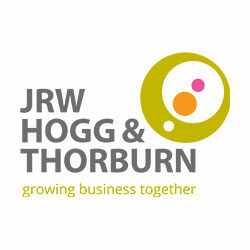New corporation tax rate regime begins
From 1 April 2023, companies with profits in excess of £50,000 will see their corporation tax liabilities increase. This also means that relievable expenses will be more valuable, so what can you do to save as much as possible? Kenny Logan from our Edinburgh office explains.
New rates
From 1 April 2023 a new set of corporation tax (CT) rates will come into effect. Companies with profits of up to £50,000 (the lower limit) will continue to pay CT at 19%, whilst those with profits exceeding £250,000 (the upper limit) will pay at 25%.
For companies with profits between these two amounts, the full 25% is charged, but the tax payable is then reduced by marginal relief. This leads to an effective overall tax rate which steadily climbs from 19% to 25% as profits increase.
The marginal relief figure can be expressed as follows:
The overall effect is that the effective rate of tax paid climbs from 19% to 25% between profits of £50,000 and £250,000. Each additional £1 between those bands is taxed at 26.5%.
Associated companies
The adjusted upper limit is £250,000 adjusted for associated companies.
The calculation of the CT due and marginal relief available needs to be adjusted where the company has associated companies.
Two companies are associated if one controls the other or both are under the control of the same person or persons.
In such instances, both the upper and lower limits need to be divided by the number of associates the company has plus one.
Distributions
Where a company receives distributions from a non-associated company, these will also affect the calculation.
The most common distributions are dividends from other companies, but they can also include other cash and/or assets received.
The distributions are added to the chargeable profits when considering if the upper/lower thresholds have been exceeded and also affect the marginal relief available.
Straddling periods
Where an accounting period straddles 1 April 2023, the new regime will only apply to a proportion of the profits.
Reducing taxable profits will be more valuable for companies after 1 April 2023, especially those in the marginal relief band. We will now consider some ways you can consider doing this in a beneficial way.
Expenses
The first question should be: “is the company deducting all of its available expenses?” Directors and employees, especially in the upper echelons of a company, may sometimes incur business expenses from their own pockets and either accidentally or intentionally forget to put in a claim for reimbursement. Ensuring staff are reimbursed for expenses they incur on behalf of the company will not only prevent ill feeling, but also allow the company to reduce its taxable profits.
Developing and rewarding staff
Whilst there are lots of more complex ways to reward staff, one simple and easy way is to make use of the £150 per head exemption for annual events. This can improve staff morale and, depending on the number of staff involved, could reduce taxable profits significantly.
Similarly, identifying and meeting training and development needs in the company’s workforce could be a wise, and tax deductible, investment.
Revisit remuneration strategy
Director shareholders are often remunerated through a mix of salary and dividends; however the mix needs to be carefully considered.
Dividends will generally lead to a lower personal tax liability, but will not give any reduction to the profits subject to CT. Conversely, a salary or bonus will save CT whilst generally leading to a higher rate of personal tax. With the change in the CT rates, the split should be reconsidered to ensure an optimal balance.
Pension contributions
For directors and employees who are already paying at higher rates of tax, contributions to a pension scheme on their behalf will yield a CT reduction, potentially without creating a personal tax liability.
Care must be taken not to exceed the employee’s pension allowance which could be as low as £10,000, i.e. if the money purchase annual allowance applies, or if the tapering rules for higher earners bite.
Losses
Careful consideration should be given to how losses arising prior to April 2023 are used. The maximum reduction in tax it has been possible to achieve in recent years has been 19%. However, for any losses available to be carried forward and set against post-April 2023 profits, a reduction of up to 26.5% could potentially be claimed. Where profits are expected to remain below £50,000 for the near future, the company will need to weigh up whether it would prefer a 19% refund now or a potential larger refund at a later date.
Capital allowances
Accelerating capital expenditure qualifying as “main rate” expenditure will also be more valuable after 1 April 2023. Remember that bringing forward expenditure by what could be just a few days into an earlier accounting period will give a cash-flow advantage of twelve months.
As you will see this is a complex area, to discuss any issues relating to the new corporate tax regime and how it might affect you, please do not hesitate to contact one of the team.
